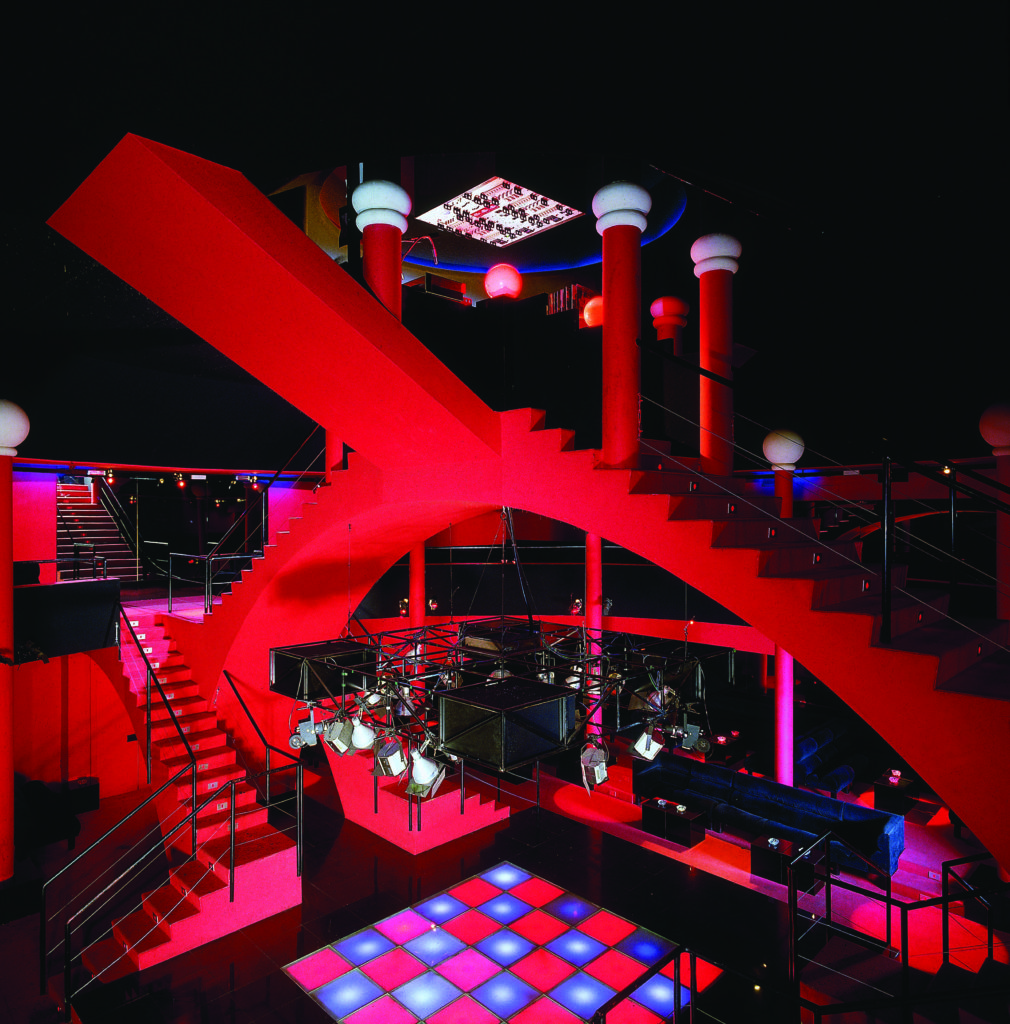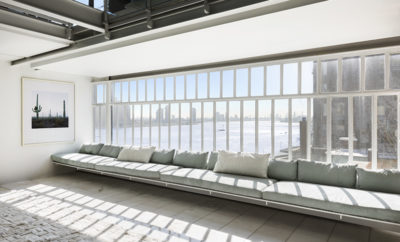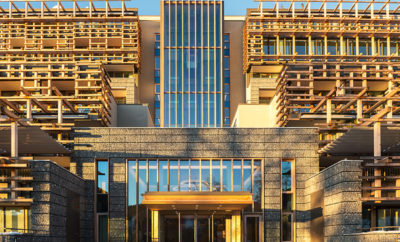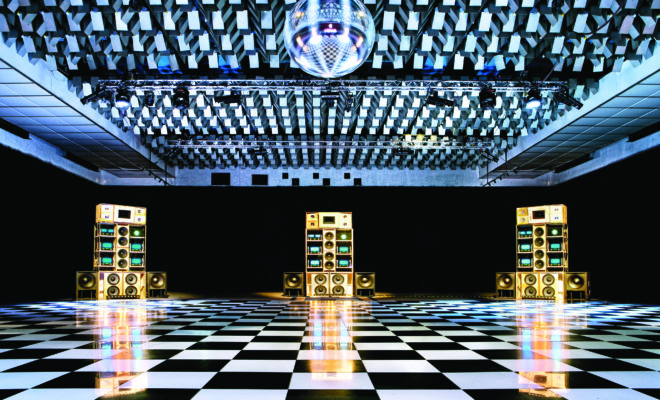 EXCEPT AS NOTED, ALL IMAGES COURTESY OF VITRA DESIGN MUSEUM
EXCEPT AS NOTED, ALL IMAGES COURTESY OF VITRA DESIGN MUSEUM
Exhibition
Design Does Disco
SATURDAY NIGHT FEVER IS, DEPENDING ON YOUR perspective, a classic or a travesty of the disco genre. The 1977 film was a global smash hit, turning John Travolta into a superstar and providing the Bee Gees with the then biggest-selling soundtrack of all time. Yet the film’s success can also be seen to mark disco’s downfall, transforming an underground scene into a commercialized mainstream that soon faced a violent backlash.
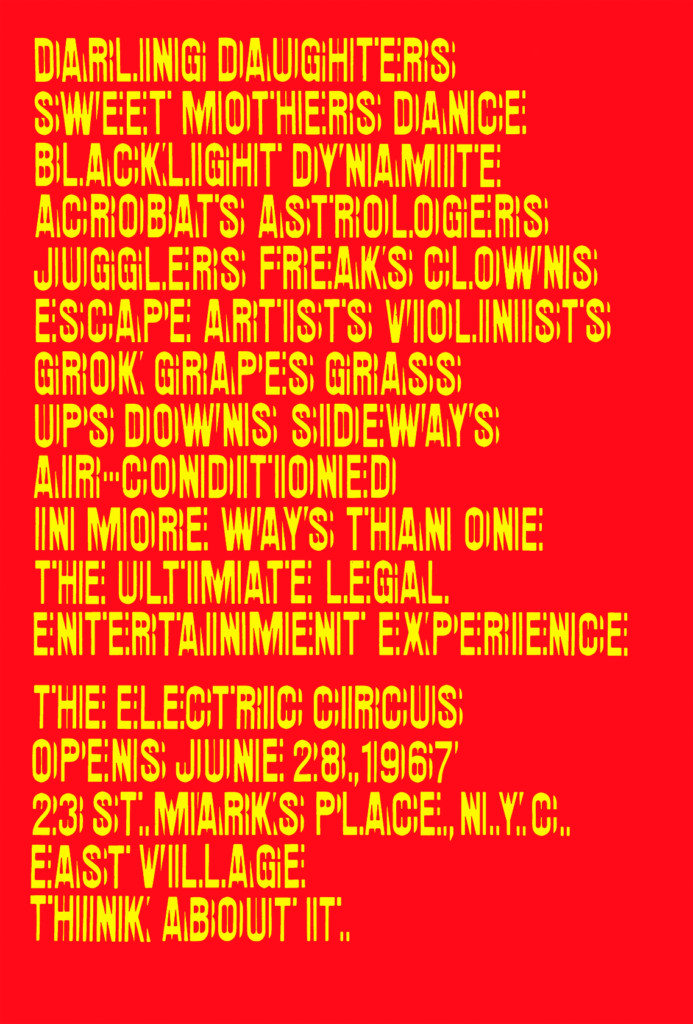
Poster for the Electric Circus nightclub in New York, 1967, designed by Chermayeff & Geismar. © IVAN CHERMAYEFF AND TOM GEISMAR
As a phrase, “night fever” encompasses more than the sell-out of a dance subculture and more than just one dance genre. It describes the experience of going out more generally, as we escape from the working day and venture out into the hedonistic night. Night fever is the feverish expectation of what is to come; the dressing up (or down) for the night ahead; and the nervous excitement felt while queuing outside a club, uncertain if you are going to get in. It is the mounting anticipation as you enter a venue and head down a darkened corridor, through a murky tunnel, or up a narrow flight of stairs. It is the racing pulse and rising temperature as you move to the music, lost to the rhythm in a sea of bodies, and maybe even a rendezvous for the hours ahead.
The exhibition Night Fever: Designing Club Culture 1960–Today is about the spaces designed to elicit that after-hours excitement, and the design cultures the nightclub has created. Since the 1960s nightclubs have been one of the most important spaces for design in contemporary culture. Epicenters of escape and experimentation, these sealed-off spaces of nocturnal leisure offered opportunities and inspiration for artists, architects, and designers all over the world, and created places for partygoers to design their own experiences and identities. This project is the first large-scale examination of the international relationship between club culture and design, from past to present. It presents nightclubs as special types of space that merge architecture, interior, product, and furniture design with sound, light, fashion, graphics, and visual effects in order to create a modern Gesamtkunstwerk that turns people into performers on the dancefloor stage.
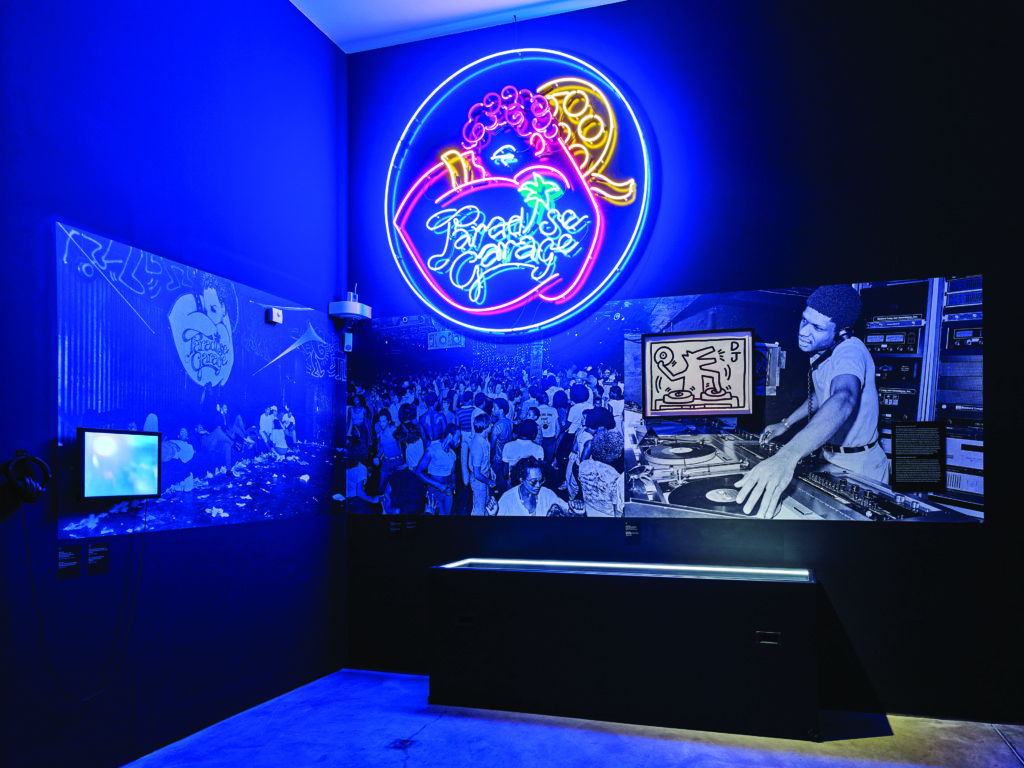
Installation view of Night Fever: Designing Club Culture 1960–Today at the Vitra Design Museum in Weil am Rhein, Germany.
There is a long and gloriously disreputable history of nighttime revelry. For centuries societies have gone out at night, finding and making spaces in which to congregate, dance, intoxicate themselves, and escape the strictures of the everyday. The nature of these spaces has varied: in the nineteenth and early twentieth centuries they included music halls and dance halls; by the 1950s jazz clubs and coffee bars catered to those seeking new sounds. Although hard to trace, the key ingredients of the modern nightclub seem to have coalesced in the post–World War II period. For the first time, people came together to dance to recorded, rather than live, music at record hops, disc sessions, and discotheques (a combination of the French words for “disc” and “library” shortened to “disco” in the 1970s). By the 1960s towns and cities in many parts of the world had purpose-built discotheques, or venues temporarily transformed into them, where people of different backgrounds could get together to dance away the night.
In the context of the postwar leisure society, and signaling its alliance with the era’s technological advances in light and sound, the new, youth-oriented nightclub proved ripe for designerly experimentation. Several of these were design concepts that connected with progressive architectural ideas of the time, critiquing architectural conventions and proposing fantastical alternatives by way of this new spatial typology. Cedric Price and Joan Littlewood’s unrealized Fun Palace—their vision for a flexible, participatory leisure venue open to all—was taken up in propositions such as Francois Dallegret’s Palais Métro Montreal shopping center (1967) and Archigram’s Monte Carlo casino complex (1969–1972), both of which featured nightclubs. In his book Experimental Architecture, Archigram’s Peter Cook recognized the ideas of the Fun Palace in Giorgio Ceretti, Pietro Derossi, and Riccardo Rosso’s L’Altro Mondo in Rimini (1967), one of several nightclubs associated with Italy’s radical design movement, such as Gruppo 9999’s Space Electronic (1969) in Florence.
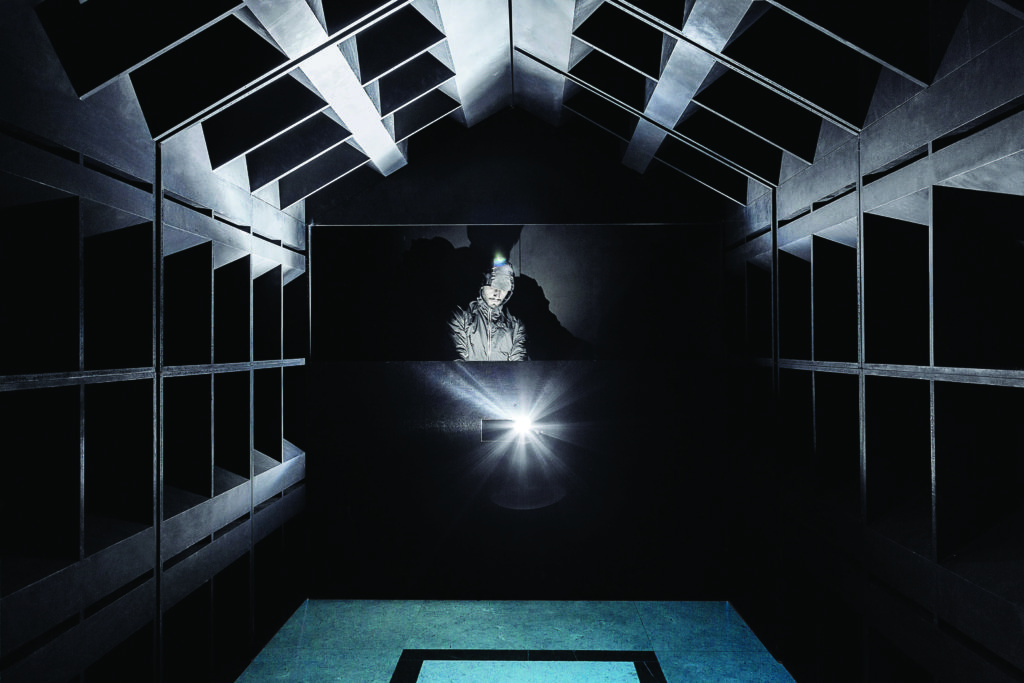
A DJ booth inside The Club, Lisbon, designed by architecture firm Bureau A (now Leopold Banchini & Daniel Zamarbide) as part of the Architecture Triennale in 2016. © MARIANA LOPES
These Italian experiments were also influenced by developments on the other side of the Atlantic, particularly in New York’s counterculture. They include the psychedelic Cerebrum (1968), designed by John Storyk, and Electric Circus (1967). It was at the earlier incarnation of Electric Circus on St. Mark’s Place that Andy Warhol orchestrated the Exploding Plastic Inevitable, a multimedia event of projections, films, and performances by the Velvet Underground and Nico. By the 1970s the nightclub stood out as a new kind of architectural typology. A mainstay of the urban nightlife landscape, it was also being embraced by creative visionaries as a flexible, participatory space that offered a utopian social alterity whose environment was made as much by technology as by its physical architecture.
This article has been excerpted and adapted from the catalogue Night Fever: Designing Club Culture, 1960–Today, which accompanies an exhibition jointly produced by the Vitra Design Museum and ADAM Brussels Design Museum.


